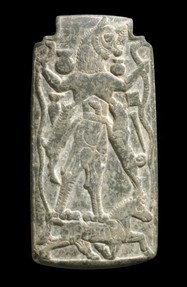 Lamashtu is depicted on another talisman plaque, this one held in the British Museum, London.
Lamashtu is depicted on another talisman plaque, this one held in the British Museum, London.
It dates from around 800 BCE. The cuneiform suggests that the stone was carved in either Babylonia or Assyria. The talisman is much younger than its near twin on display in the Louvre.
Fear of Lamashtu held sway for centuries before her legend became reduced. First a ray of hope was inserted. The God Pazuzu was able to protect babies from being devoured by her. The amulet and talismans attracted His divine attention.
Next came an erosion of status. Somewhere along the way, Lamashtu became described not quite as a goddess, but as a spirit of the air. She was the daughter of the sky god Anu, so it all fit nicely into place.
The Sumerian for air was 'lil'. In plural, that would be 'lilu'. What begins to emerge is a specific spirit of the air named Lilitu. She is described as a terrible baby-eating seductress, who lived in remote places, like the desert. Everything about her screams Lamashtu, but she's indistinct and she can be avoided. She's a spectral being, not a deity. Presumably Pazuzu defeated this aspect of Her.
The Semites picked up this legend and, perhaps linking her back to her divine origin, transformed Her into Lilith.
Meanwhile, the real Lamashtu still lingered, until the Hellenic culture could gain enough traction to sweep Her up into their pantheon. Suddenly Lamia emerged, sharing so many of the characteristics - particularly in matters of devouring babies and seducing men - but controllable. Lamia began as a human woman. Even in Her divinity, She is only a minor figure in the Greek pantheon. Her nemesis Hera far out-ranks Her.
The world now had blood-suckers, who were originally human, but are now immortal. The genesis of the vampire was there. But it needed more to transform the monster fully into the form that we would recognize today.
What happened next is very much open to speculation. I personally believe that it was the Celts, who carried the legend of Lamia west, across the whole of southern Europe. By 275 BCE, Celtic culture held fast throughout most of Europe, and one of their defining features were shifts in funeral rites.
It's my strong suspicion that Lamia became infused in such spiritual battles, which marked the switch from cremation to tumulus burials. After all, people would have wanted to do right by their beloved deceased, but what could possibly go wrong for a corpse? Extant Celtic spirituality would have had room for the dead rising from their graves to enact revenge. Lamia gave them the terrible means by which that revenge was executed.
Nevertheless, this is all still speculation, based on the history and location of the Celts at the time, plus evidence from Celtic cultures elsewhere. (Lamia exists in Basque; and sixth century Ireland definitely had vampiric folklore.)
Now the notion of a blood-sucking, immortal monster was firmly linked with the grave. Plus it had humanity, not divinity, at its root.
The Celts moved on, pressed ever westward by invading Slavonic tribes or the emerging might of the Roman Empire. Yet their stories remained where they had been. This included the Danube River Basin, which is absolutely the traditional hotbed for vampire legends. It includes Serbia, which gave us the very word 'vampire', and eventually kick-started the 18th Century Vampire Controversy.
It's that latter part of verifiable history, which inspired the modern vampire genre in books, then movies and television.
It was the idea of Lamashtu, rather than the goddess Herself, which survived. Divorced from the original, this idea was flexible enough to twist and change under the influence of several cultures, primarily Hellenic, Celtic and Slavonic. Once the vampiric idea could gather around a male figure, then the way was wide open to create Count Dracula.
Lamashtu would have eaten him alive.


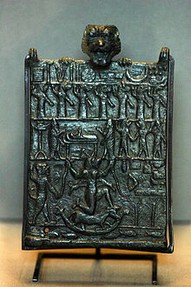 In the Louvre Museum, there is a free-standing plaque. Wrought from metal and stone, it dates from the Bronze Age, and it depicts a terrifying tableau.
In the Louvre Museum, there is a free-standing plaque. Wrought from metal and stone, it dates from the Bronze Age, and it depicts a terrifying tableau.
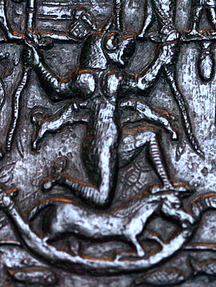 It is difficult to tell where in ancient Mesopotamia such stories first began circulating.
It is difficult to tell where in ancient Mesopotamia such stories first began circulating.

 Lamashtu is depicted on another talisman plaque, this one held in the British Museum, London.
Lamashtu is depicted on another talisman plaque, this one held in the British Museum, London.





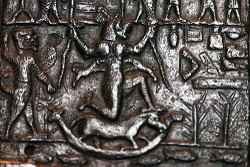

 St Tydecho's Churches in West Waleson 09/03/2014
St Tydecho's Churches in West Waleson 09/03/2014
 Goodies for an Outlander Premiere Partyon 03/06/2015
Goodies for an Outlander Premiere Partyon 03/06/2015
 Holocaust Memorial Day Interview with Rainer Höss, Grandson of Rudolf Architect of Auschwitzon 01/24/2015
Holocaust Memorial Day Interview with Rainer Höss, Grandson of Rudolf Architect of Auschwitzon 01/24/2015
 Romantic Valentine Gifts for an Outlander Fanon 01/16/2015
Romantic Valentine Gifts for an Outlander Fanon 01/16/2015


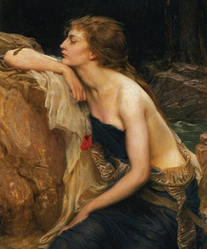
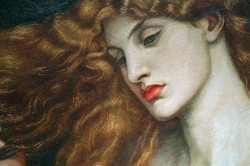
Comments
Thank you very much, Ragtimelil. It was a fascinating journey to get to Lamashtu.
I'm fascinated by the history of ancient times! Especially ancient religions. Very well done.
I'm pleased that you found it interesting, and you're very welcome. It's been quite fascinating tracing vampirism all the way back to Lamashtu.
I found this really interesting, thanks for putting in the effort to make this article!
Thank you very much. I'll admit that I had several surprises on this journey. I thought it all began with the Slavs in the Danube River Basin - Serbia, Bosnia, Romania, Hungary, all those places where we in the West immediately hark back to, when vampires are mentioned.
It was an eye-opener when the vampiric trail led further East into Greece and Israel. Then for that in turn to have been influenced by Mesopotamia really startled me.
But the thing which REALLY blew my mind was when I found my own Celtic ancestors involved with the legend so far back. We don't tend to think of the Celts in central and southern Europe, because we're so used to us lot being over here in the West.
There's certainly an article coming over the next few weeks, tracing the early Celtic influence on the legend. It seems that my lot have been pushing vampires and blaming it on the Slavs for millennia!
If someone would ask me about the very first origins of vampirism in ancient cultures I would probably cite ancient Greece and Lamia. Westen culture - sometimes - tends to neglect the importance and/or influnce of ancient Messopotamian culture despite the fact that it is actually more ancient than the Greek one.
Well researched article, Jo and the Lamastu plaque is simply amazing (and quite creepy as well :)